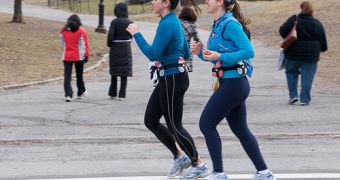A team of researchers from the North Carolina Research Campus, found that people who are physically fit and active, have fewer risks of catching colds.
It seems that physical fitness decreases the severity and the frequency of colds, reducing upper respiratory tract infection in adults.
At the research took part 1,000 adults under the age of 85, who had their respiratory health tracked for a period of 1 week, during the autumn and winter of 2008.
6 out of 10 participants were women, 4 out of 10 were aged between 18 and 39 years, 40 percent were middle aged, and one in four were aged 60 and older.
All study participants reported how frequently they had aerobic exercise and they rated their fitness levels on a scale from 1 to 10.
They also had to answer questions about their lifestyle, diet and stressful events in their lives, because all are potential factors that can affect the immune system.
On average, the participants had cold symptoms for a period of 13 days in winter and 8 days in autumn.
It seems that being older, a man and married means having less colds, but once other factors are considered, the most important things for a good health are fitness and exercise.
People who were reportedly active on five or more days a week and felt fit, had 43% to 46% less days with cold symptoms, than those who exercised once or less a week.
Also, the severity of the symptoms was 41% lower for those who felt the fittest and 31% lower for those who were more active.
An US adult can catch a cold 2-4 times a year, and a kid 6-10 colds a year, on average, and this costs the United States nearly $40 billion every year.
When people exercise, they temporarily raise the immune system cells circulating in their bodies, and even if these levels go back to normal a few hours later, every round of exercise helps fighting against viruses and bacteria, thus reducing the number and the gravity of infections.
This research is published online in the British Journal of Sports Medicine.

 14 DAY TRIAL //
14 DAY TRIAL //